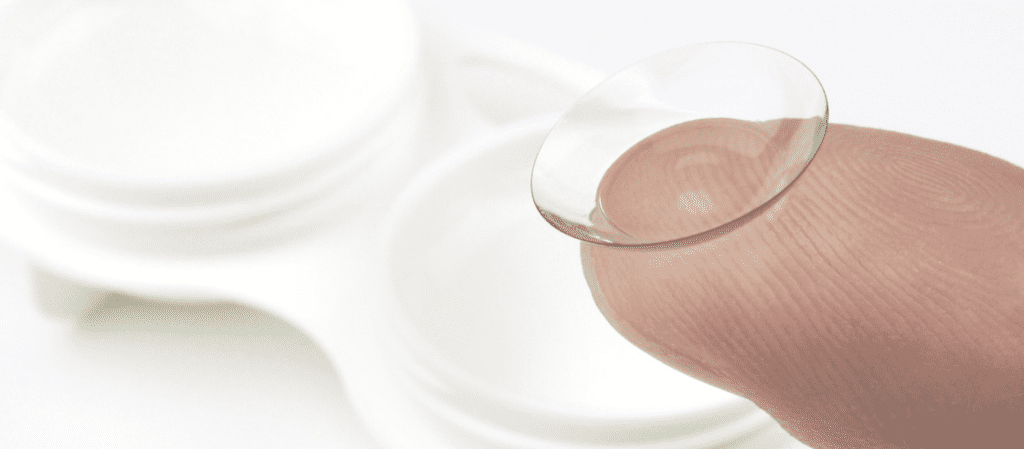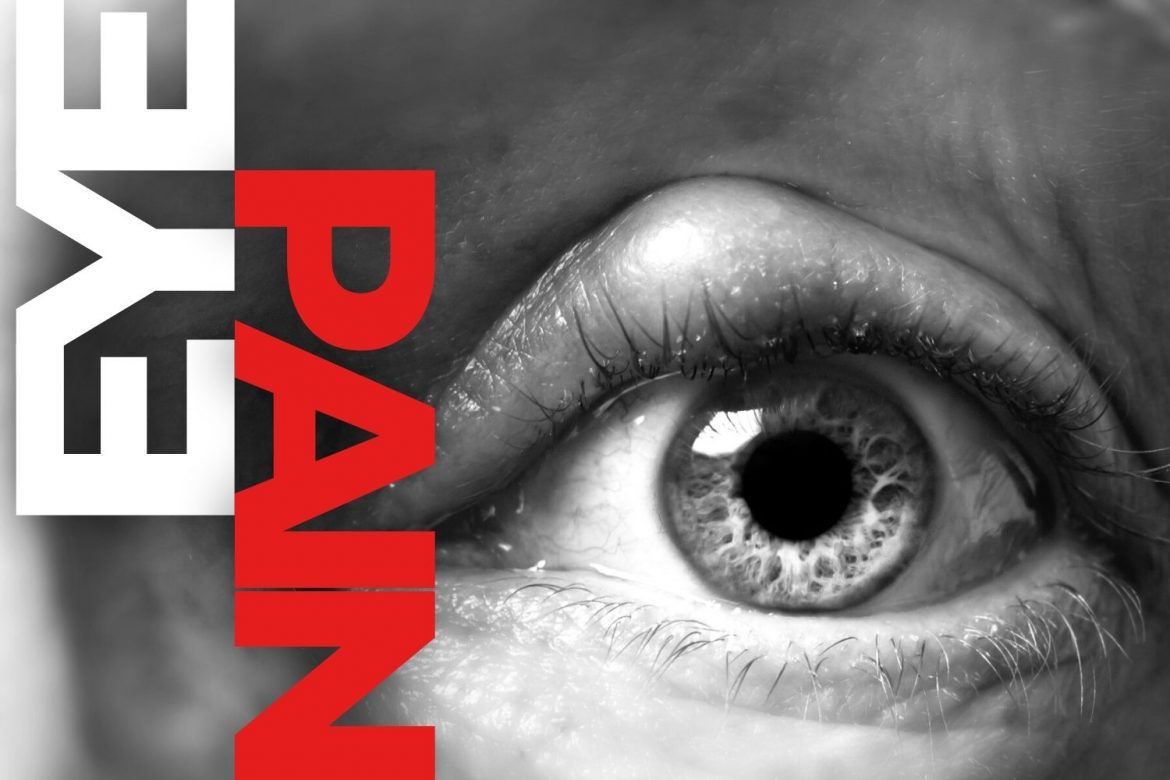
Whether it’s a speck of dust or dirt, pollen, or maybe an eyelash that’s causing your eye to tear up, nearly everyone in the world can relate to the misery associated with minor eye irritations or discomforts.
With minor eye irritation, the good news is it generally subsides after using eye drops, rinsing your eye with water, or removing the offending object. But experiencing debilitating eye pain is another story, and one that can have a not-so-happy ending—especially if you are unaware of the signs and symptoms of the leading causes of eye pain.
What is eye pain?
Eye pain is often described as aching, scratching, burning, or throbbing on the surface of the eye or pain deeper within the eye. All are serious indications of a potentially dangerous, and in some cases, vision-threatening, health issue that can be caused by an injury, a viral or bacterial infection, or even a serious health condition or disease.
Regardless of the cause, eye pain should always be evaluated and treated by a qualified ophthalmologist. Of course, eye pain accompanied by vision loss should be considered an emergency and treated immediately.
Ocular pain vs. orbital pain
Serious eye pain typically falls into one of two categories: (1) ocular and (2) orbital eye pain.
- Ocular eye pain occurs on the surface of the eye, including the cornea, conjunctiva, and even your eyelids. Most often, it’s caused by foreign objects, trauma to the eye, or an infection.
- Orbital eye pain is discomfort and pain occurring deep within the eye, including the iris, lens, retina, and various muscles and nerves of the eye. Orbital eye pain is often described as aching, throbbing, or stabbing, and typically considered more serious.
What are the common causes of ocular eye pain?
Besides having something in your eye, an issue with the cornea is the most common cause of ocular eye pain. Your cornea is the clear, outermost layer of the eye. It’s like the first line of protection for the rest of your eye and is responsible for keeping foreign objects, germs, and other harmful objects out .
Considering the location and role of the cornea, it stands to reason that experiencing pain, irritation, and/or discomfort as a result of an issue with the cornea can also cause pain in other parts of the eye, including the iris, pupil, and lens.
The leading causes of ocular eye pain include:
Corneal abrasion
A corneal abrasion, or a scratch, might sound like a minor issue, but it’s often a cause of serious ocular eye pain. Most corneal abrasions occur while trying to rub or brush a foreign object from the eye.
The problem with a corneal abrasion is it often feels like there’s something in the eye, which causes you to continue to rub or touch your eye, further irritating and, in some cases, further injuring the cornea. Most corneal abrasions will heal on their own and without issue after a few days. Your doctor will most likely prescribe antibiotic drops to prevent secondary infection during the healing process
Corneal infection
A corneal infection—sometimes referred to as keratitis—is often caused by a viral, bacterial, or fungal infection and is commonly associated with overwearing contact lenses or storing contact lenses in contaminated or unsterilized carrying cases.
In addition to causing eye pain, symptoms of keratitis include eye redness, excess discharge or tearing, sensitivity to light, and blurred or decreased vision. Depending on the exact cause, keratitis will typically be treated with an antibiotic, antifungal, or antiviral medication.

Eyewear Care: A Guide to Caring for Your Eyeglasses and Contact Lenses
Corneal ulcer
A corneal ulcer is an extremely painful open sore on the cornea. Corneal ulcers develop for a variety of reasons, including bacterial, fungal, viral, or parasitic infections, severe dry eyes, a corneal abrasion, or irritation caused by wearing contact lenses for extended periods of time or that are not disinfected correctly.
In rare cases, corneal ulcers result from a nutritional deficiency of vitamin A and/or protein. Corneal ulcers are extremely serious and require immediate medical attention that involves continuous treatment with antiviral, antibiotic, or antifungal eye drops for several days.
In extreme cases, treatment of this condition will require a corneal transplant. In rare instances, corneal ulcers may lead to more serious secondary infections, displacement of the iris, and permanent damage to the tissue in and around the eye socket. While corneal ulcers can heal after treatment, they can also leave scarring that impairs vision.
Sty
A sty is a red, painful lump or bump that develops on the inside or outside edge of your eyelid and is the result of an infection in the oil glands located in your eyelid.
Sometimes mistaken for a boil or pimple, a sty is a bacterial infection that causes pain, swelling, and tearing. Because it’s an infection, it’s fairly common to see sties filled with pus. While sties often heal after a few days, applying a warm compress often relieves associated pain and discomfort.
Consult with your doctor in cases where the sty has not improved after two days or anytime the swelling spreads within or around the eyelid.
What are the common causes of orbital eye pain?
Orbital pain is most often described as a deep, constant ache occurring within or behind one or both eyes. Unlike ocular pain (which can occur for a wide variety of reasons), orbital pain is more closely associated with more serious conditions or diseases affecting the eyes and should always be evaluated and treated by a medical professional.
The leading causes of orbital eye pain include:
Optic neuritis
Optic neuritis is a very serious condition that occurs when the optic nerve becomes swollen and inflamed.
Your optic nerve is responsible for transmitting visual information from your eyes to your brain. The main symptoms of optic neuritis are:
- Pain associated with eye movement (especially side-to-side movement)
- Temporary loss of vision in one eye
Optic neuritis is often the result of a bacterial infection, but recurrent cases could be an indication of a more serious autoimmune issue like lupus or multiple sclerosis.
Sinusitis
Sinusitis is an inflammation of the tissue lining the walls of your sinuses. Often the result of an infection or allergies, this inflammation causes pressure to build behind the eyes. As this pressure increases, it causes throbbing pain and pressure in and around your eyeballs.
Acute sinusitis, which is likely the result of a cold or allergies, typically goes away within a few days. Chronic inflammation can last between 6 to 8 weeks and require treatment with antibiotics.
Glaucoma
Glaucoma is actually a group of eye conditions that cause abnormally high pressure to form in the eye and around the optic nerve. Considered one of the leading causes of blindness, glaucoma most often affects people who are over age 60.
While most forms of glaucoma develop gradually and without symptoms, one specific type known as acute angle-closure glaucoma develops rapidly and is considered a medical emergency that can result in permanent loss of vision.
Acute angle-closure glaucoma causes pressure in and around the eye resulting in severe headaches, blurred vision, eye pain—even nausea and vomiting.
Severe eye pain is a serious medical issue
A variety of issues can cause eye pain. While removing an eyelash or some dust from your eye can most often be accomplished without a trip to your doctor or eye care professional, any condition that causes serious eye pain or is accompanied by changes to your vision and/or severe headaches, nausea, or vomiting should be treated as a serious medical issue and be treated by a medical professional.

